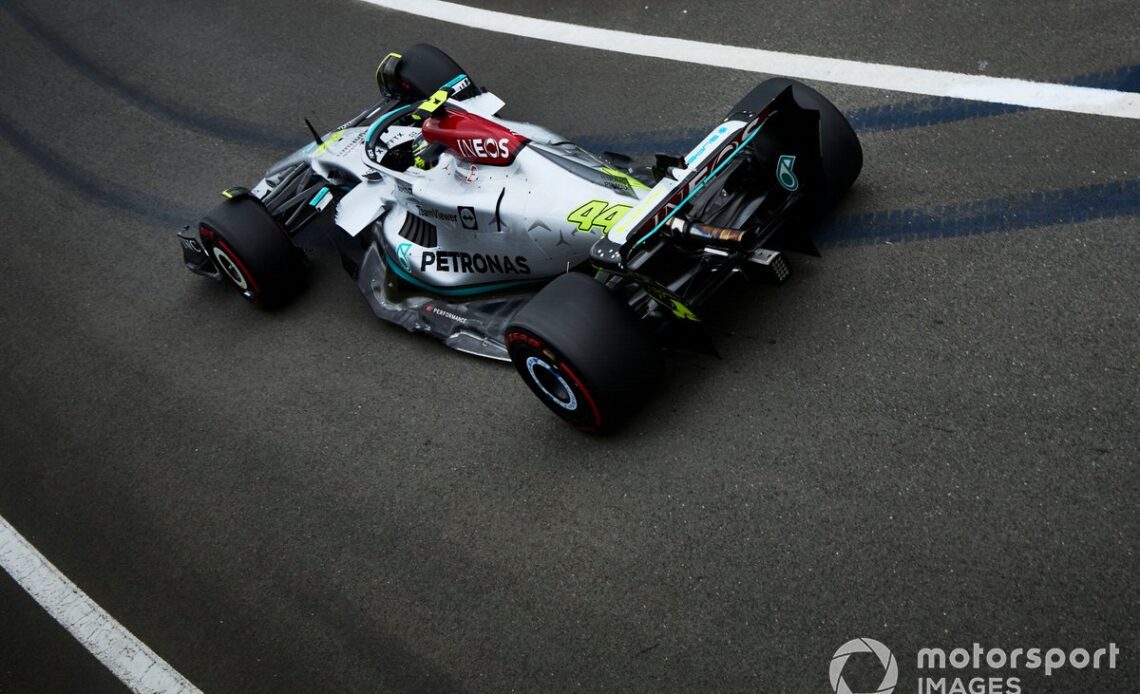As part of the discussions between the FIA and teams about a planned safety clampdown on excessive porpoising that drivers are unhappy about, one area of focus has been on the stiffness of the floors and planks of cars.
Autosport understands that during talks in a Technical Advisory Committee (TAC) meeting in the week after the Canadian Grand Prix, suspicions emerged of some teams pushing the boundaries of the rules that are supposed to limit the flexing of their floors and planks.
The current regulations stipulate a maximum deflection of 2mm at the two middle plank holes and no more than 2mm at its rearmost hole in a bid to ensure that the floor is stiff enough.
However, there were claims some teams have managed to cleverly flex the floors by as much as 6mm in total, which would allow them to run with higher rake and much closer to the ground for increased performance without the risk of suffering the ill effects of ground strikes.
Sources suggest a number of teams were surprised at what their competitors had been up to, with Wolff confessing how taken aback he was about the situation.
“Nobody had an idea until the FIA brought it up in the last Technical Advisory Committee, which was to a great surprise of all the teams,” he explained.
“What’s in the regulation and what the intent of the regulations is pretty clear. I mean, there’s is no argument why that could deflect more than what’s in the regs. So a bit of a surprise to say the least: more a shocker.”
In response to the revelations over flexi-floor antics, the FIA responded as part of its bid to reduce the effects of porpoising by notifying teams of a planned change to the rules.
In the draft technical directive issued at the British Grand Prix by the FIA’s single-seater technical director Nikolas Tombazis, and which comes into force in France, the FIA has announced a tightening up of the rules regarding floor stiffness.
Lewis Hamilton, Mercedes W13
Photo by: Steve Etherington / Motorsport Images
It made clear that it was making the move to ensure that there was “a fair and equitable relevance amongst all the cars,” which perhaps suggested that was not the case before.
Tombazis made clear that the FIA believed teams having ‘excessive deformation’ of the floor was being done: “to achieve significantly lower ride heights, and hence an indirect aerodynamic gain.”
The 2mm tolerance will be rigorously enforced and the stiffness around the floor hole must now be uniform for a radial…
Click Here to Read the Full Original Article at Autosport.com – Formula 1 – Stories…

